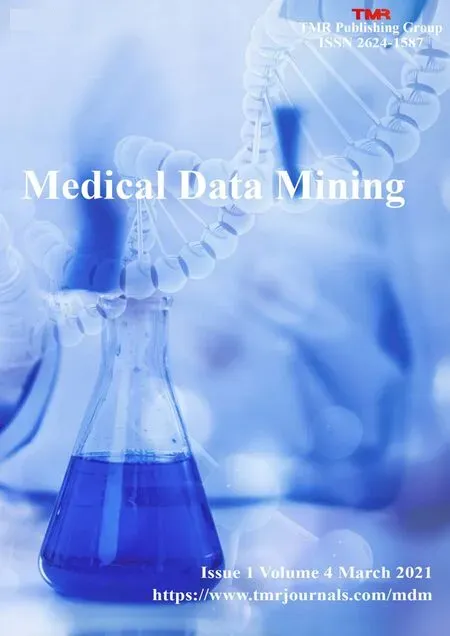Based on data mining, the drug law of clinical treatment of chronic urticaria
Hai-Ping Duan, Ming-Kai Wang, Hai-Die Liu, Yu-Rong Zhao, Li-Feng Wang
1Yunnan University of Traditional Chinese Medicine, Kunming 650500, China; 2First Affiliated Hospital of Yunnan University of Traditional Chinese Medicine/Yunnan Hospital of Traditional Chinese Medicine, Kunming 650021, China.
Background: Based on clinical data mining, we introduce the medication rule and clinical application of Professor Wang Lifen in the treatment of chronic urticaria, as the reference of clinical treatment of chronic urticaria.Methods:we collected 110 traditional Chinese medicine prescriptions for the treatment of chronic urticaria, and found out tastes, functions and channel tropism of Chinese medicine.After collecting and sorting, we inputted the data into excel 2010 software and established drug electronic database.We calculated the frequency of tastes, functions and channel tropism using the Spss 20.0 and analyzed the potential relationship between the drugs using Weka 3.8.We used Cytoscape 3.6.1 to draw the related network and combine it into a new prescription.Then the clinical data of prescriptions were statistically analyzed.Results: The statistical analysis showed that the high-frequency drugs for the treatment of the disease were Gancao (Glycyrrhizae radix et rhizoma), Huangqin (Radix scutellariae),Desmopeel, Jingjie (Herba schizonepetae), parsnip, etc., accounting for more than 69.50% of the total frequency.Moreover, the combination and drug pairs with the strongest and most commonly used high-frequency drugs were found.From the point of medicinal properties of these drugs in the treatment of chronic urticaria, the main drugs are cold, followed by warm and smooth, accounting for 70.75% of the total frequency.From the perspective of the efficacy of these drugs in the treatment of chronic urticaria, heat-clearing drugs are the main ones, followed by relieving drugs and Tonic drugs, accounting for 68.25% of the total frequency.From the perspective of medicine taste, sweet taste is the most important, followed by bitter and pungent taste, accounting for 68.00% of the total frequency.From the perspective of drugs channel tropism, the meridian of spleen is the most important, followed by the meridian of lung, liver, heart, stomach, etc., accounting for 71.62% of the total frequency.Conclusion:According to the data mining results, traditional Chinese medicine treatment of chronic urticaria is mainly based on dispelling wind, clearing heat and removing dampness, cooling blood and detoxifying, supplemented by nourishing blood and nourishing deficiency.This data mining conforms to the law and principle of traditional Chinese medicine treatment of chronic urticaria, which has certain reference and enlightenment significance for clinical treatment of chronic urticaria.
Key words: Chronic urticaria, Data mining, Traditional Chinese medicine, Treatment, Drug law
Background
Urticaria belongs to a kind of skin allergic disease and it can cause localized edema and obvious itch,clinically characterized by appearing wheals along with prurituson in partial or whole body.The wheals are red or white, appearing on or off.When they are faded, no trace is leaved.Urticaria sometimes can be accompanied by shortness of breath, diarrhea and abdominal pain and other symptoms.Shock can happen in severe cases [1].It is generally believed that urticaria occurs almost every day, and if it lasts for 6 weeks or more, chronic urticaria can be diagnosed.The etiology of acute urticaria can often be found, but the etiology of chronic urticaria is difficult to be clear and the pathogenesis of chronic urticaria is complex, which is not fully understood at present.Current studies believe that its pathogenesis is mainly related to autoimmunity, vitamin D deficiency, abnormal blood coagulation, and chronic infection [2].Western medical treatments for chronic urticaria mainly focus on anti-allergy, but it is easy to relapse, and exists certain adverse reactions.Chronic urticaria belongs to the category of “addiction rash” and “red white oil wind” in traditional Chinese medicine (TCM).Through repeated clinical practice, it has been proved that Chinese herbal decoction has significant effect on the treatment of chronic urticaria, with few side effects and high acceptance by patients [3].TCM plays an important role in the treatment of chronic urticaria, and its curative effect is confirmed by evidence-based medicine [4], but the chronic urticaria treatments with TCM are various, and the liquid forms are different.At present, there is no data mining of TCM prescriptions for chronic urticaria.Therefore, we collected prescriptions of TCM in treatment of chronic urticaria from the outpatient for further statistical analysis, and digged the potential clinical drug laws.We hope we can provide a reference for the modern clinical medicine in treatment of chronic urticaria.
Materials and methods
Subjects
A total of 110 chronic urticaria records from July 2019 to December 2019 were collected, treated by Professor Wang Lifen, a dermatologist in Yunnan Hospital of TCM.
Inclusion criteria
(1) The study subjects must meet the diagnostic criteria of chronic urticaria in Chinese Clinical Dermatology and Chinese Medicine Surgery.
(2) TCM decoction must be used with specific drugs,without other external intervention measures, such as acupuncture and moxibustion, thread embedding, etc.
(3) Patients aged 14 to 65 years old, regardless of gender.
(4) Cases that must be collected for clinical purposes.
Exclusion criteria
(1) Chronic urticaria could not be diagnosed, and the intervention measures were too complicated.For example, external prescription combined with internal prescription was used to treat chronic urticaria, or combined with acupuncture, massage, cupping,collateral-puncture, thread embedding and other means.It was impossible to determine which therapeutic measures took the effect.
(2) No TCM decoction and no specific drugs or incomplete drugs were excluded from the treatment.
(3) Patients with severe hypertension, diabetes,hyperthyroidism and other endocrine and metabolic disorders were excluded.
(4) Patients who do not meet the diagnostic criteria of chronic urticaria in Chinese Clinical Dermatology and Traditional Chinese Surgery were excluded.
Data specification
In order to ensure the accuracy of the data, the drugs with different names and the same drug were sorted out according to Chinese materia medica.The name of TCM varies with region, processing and variety.In order to ensure the data accuracy, drugs with different names were unified according to “Chinese Materia Medica” [5], such as “Huang Liang”, “rhubarb”referred to as rhubarb.Drugs with different tastes and channel tropism were also unified according to“Chinese materia medica”, such as Baixianpi (Cortex dictamni) is heat clearing medicine, with cold property,bitter taste.It is returned to “Stomach”, “Spleen”, and“Bladder Meridian”.
Statistical Methods
We collected 110 TCM prescriptions for the chronic urticaria treatment by Professor Wang Lifen, and found out functions, properties, tastes and channel tropism of TCM.After collecting and sorting, we inputted the data into excel 2010 software and established drug electronic database.We calculated the frequency of properties, tastes, channel tropism and functions using the Spss 20.0.Drugs frequency equals to drug appear frequency/the total drug frequency.prescription frequency equals to drug appear frequency/the total TCM prescriptions.WEKA 3.8 was used to analyze the potential relationship between drugs, in which the confidence was the ratio of the number of records including the latter item B and the former item A to all the records containing A.The promotion degree is the ratio of the number of records including the latter item B and the former item A to all the records containing B; if A then B, then C =P(A and B)/P(A); if A then B, then C =P(A and B)/P(A); support: S =P(A)/P(total); L =P(A and B)/P(B).
Cytoscape 3.6.1 was used to make network views of the obtained drugs with strong association rules for the treatment of urticaria.On the basis of the analysis results, the unsupervised entropy hierarchical clustering algorithm was used to carry out hierarchical clustering analysis, and the new formula combination for the treatment of chronic urticaria was obtained.
Results
Screening results of clinical case data
One hundred and ten prescriptions for the chronic urticaria treatment in Professor Wang Lifen’s outpatient department were collected.These prescriptions involved 133 Chinese herbal medicines.Among the TCM prescriptions for the treatment of chronic urticaria, the total frequency of drug use, total frequency of channel tropism, total frequency of medicinal properties and total frequency of drug taste were 1,595, 4,387 and 1,595 and 2,452 times respectively.
Distribution of high-frequency drug use
The statistical results showed that the drugs with the use frequency ≥ 17 were Gancao (Glycyrrhizae radix et rhizoma), Huangqin (Radix scutellariae),Fructus alba, Jingjie (Herba schizonepetae), etc., which were used for 1,113 times, accounting for 69.50% of the total (1,595 times).The statistical results are shown in Table 1.
Distribution of high-frequency drug efficacy
Statistical results showed that the efficacy of drugs with frequency ≥ 17 were 5 categories, including antipyretic drugs, antipyretic drugs, and antideficiency drugs.Among them, antipyretic drug > antipyretic drug BBB > tideficiency drug, the cumulative efficacy frequency of the above drugs was 1,113 times,accounting for 64.80% of the total frequency (1,595 times).The statistical results are shown in Table 2.
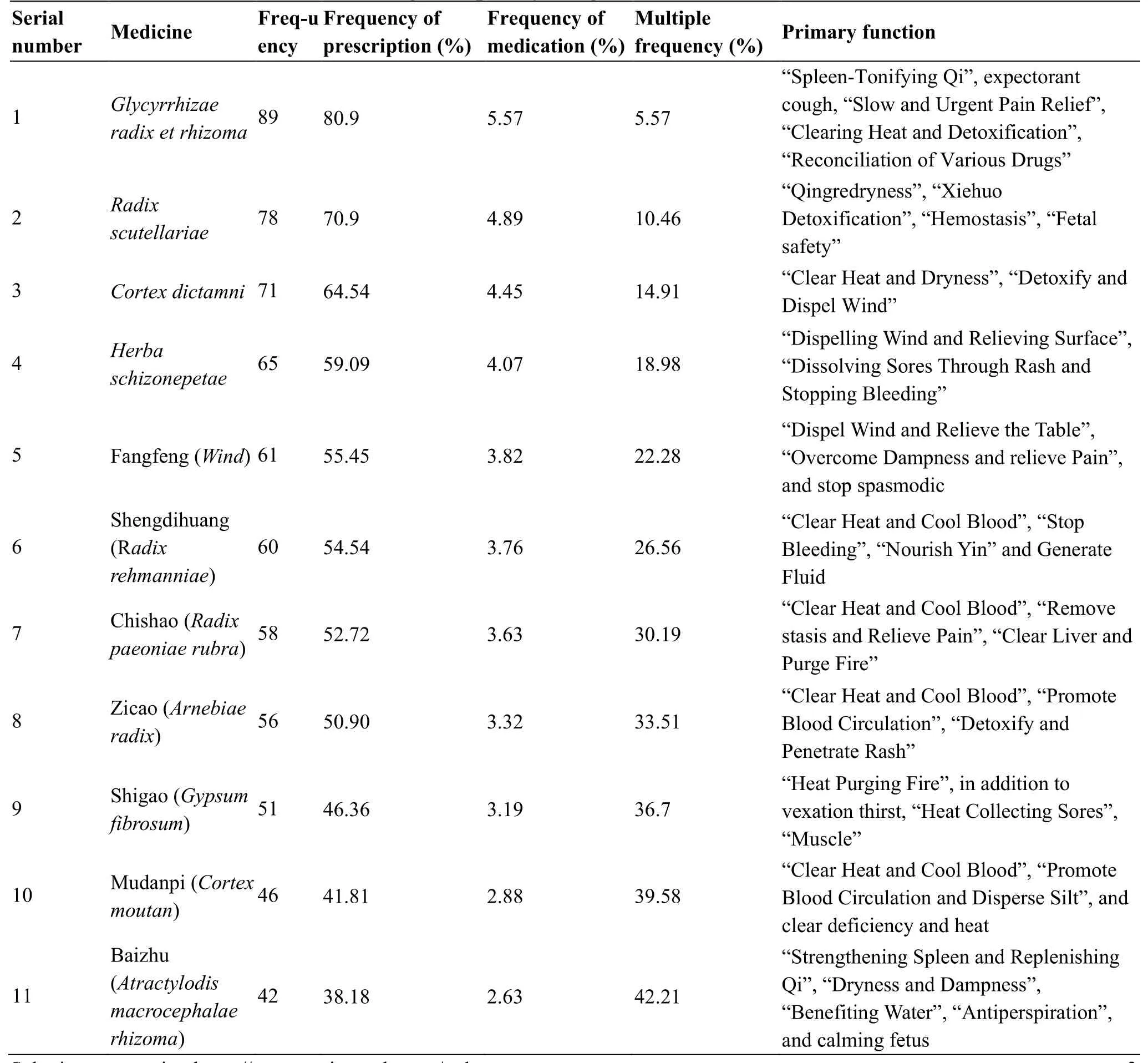
Table 1 Distribution table of high-frequency drug use in clinical treatment of chronic urticaria
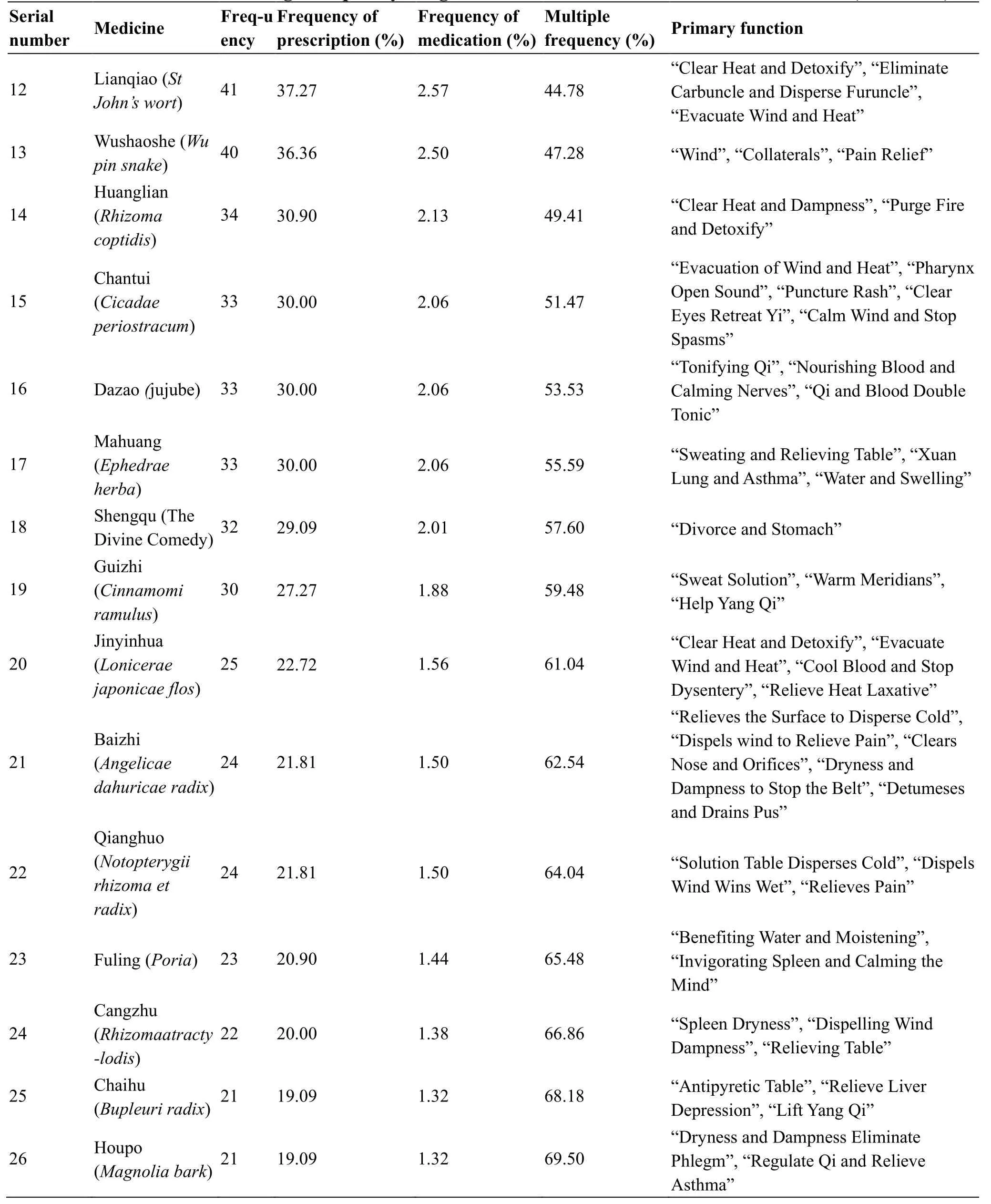
Table 1 Distribution table of high-frequency drug use in clinical treatment of chronic urticaria (continued)
Distribution of properties of high-frequency drugs
The statistical results showed that the drug properties with the frequency of use ≥ 17 were cold, warm and plain.Among them, cold > and warm BBB > re flat,and the cumulative frequency of the above drugs was 1,113 times, accounting for 70.75% of the total frequency of drugs (1,595 times).The statistical results are shown in Table 3.
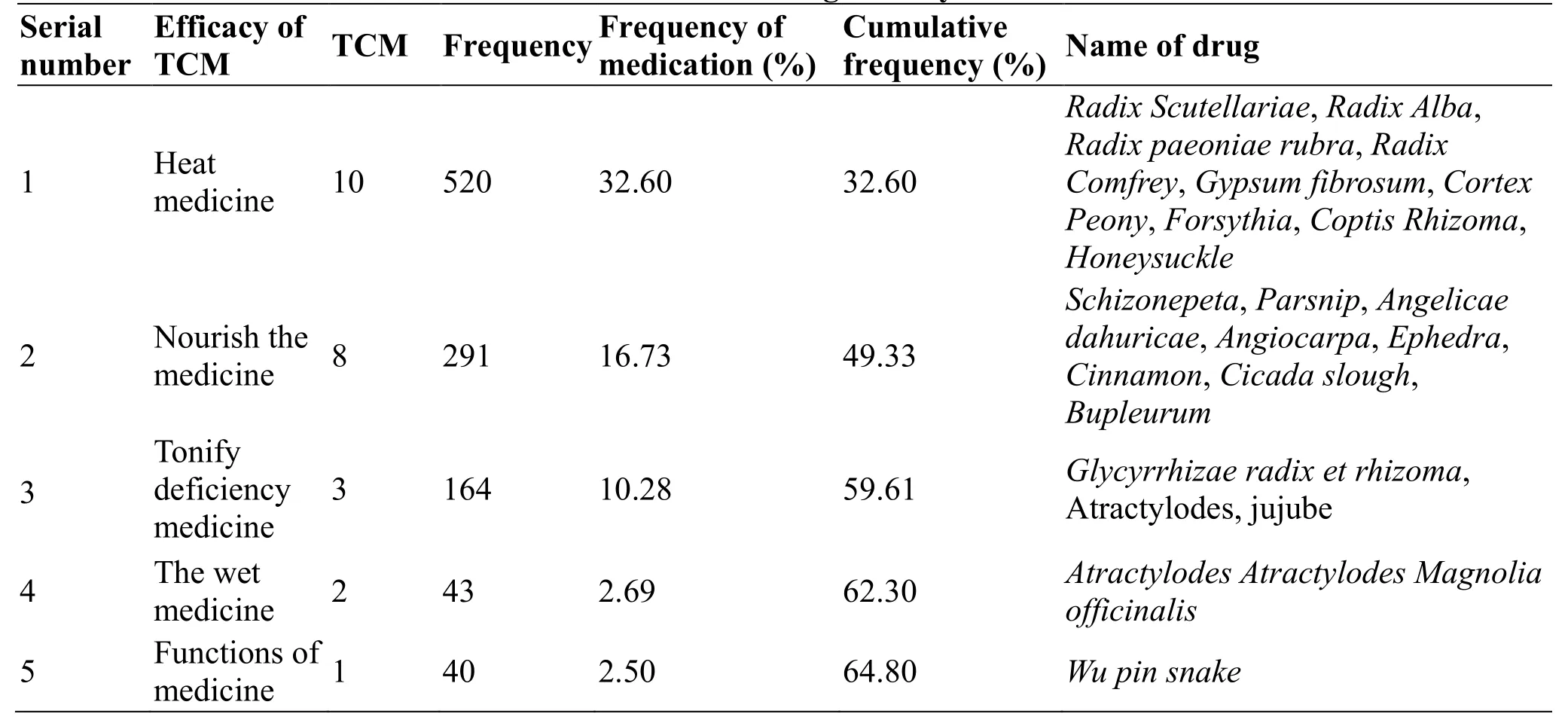
Table 2 Clinical treatment of chronic urticaria drug efficacy classification and distribution table
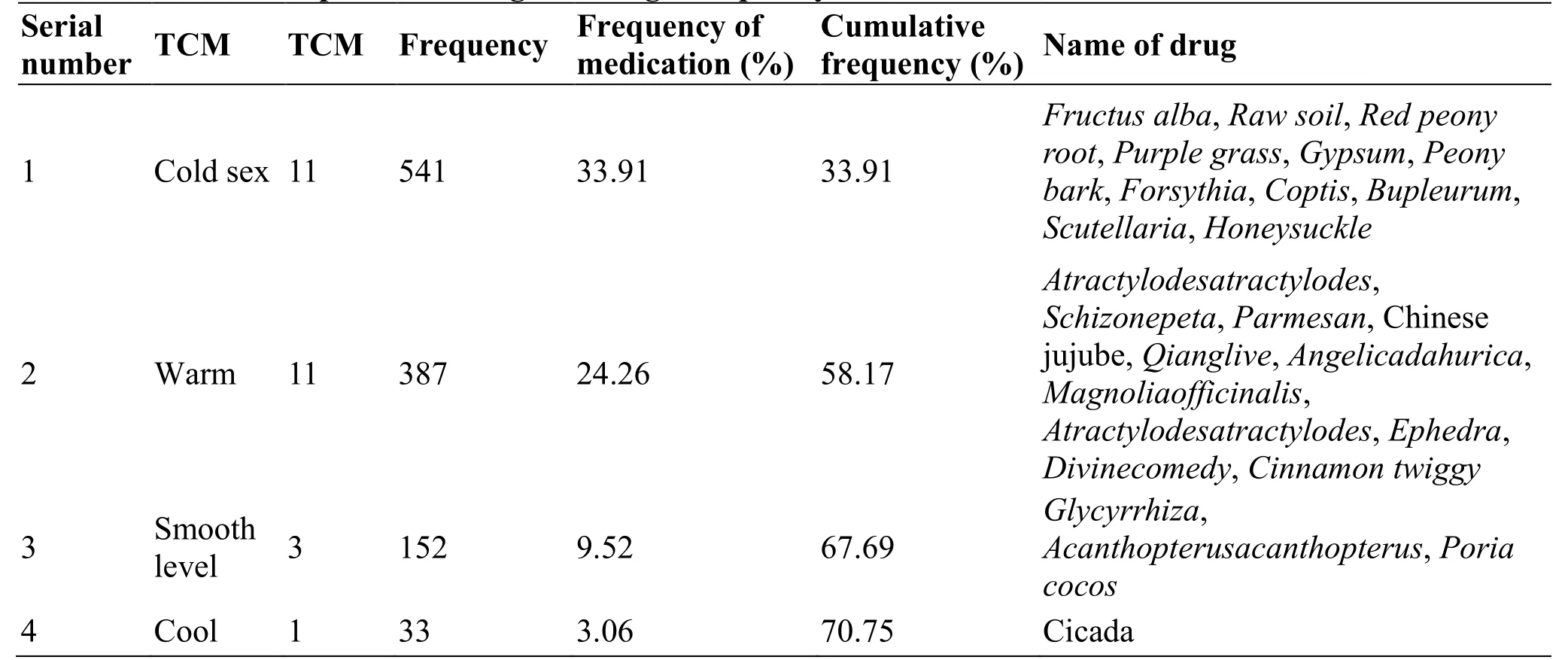
Table 3 Properties of drugs with high-frequency use for the treatment of chronic urticaria
High-frequency drug flavor distribution
The statistical results showed that the drug flavors with the use frequency ≥ 17 were sweet taste, bitter taste and spicy taste, among which sweet > bitter > spicy taste was used for 1,668 times, accounting for 68.00%of the total drug flavor frequency (2,452 times).The statistical results are shown in Table 4.
Distribution of high-frequency drugs by meridian
The statistical results showed that the drugs with the use frequency ≥ 17 were divided into 9 categories:“Spleen”, “Lung”, “Liver”, “Heart”, “Stomach”, etc.The “Spleen Meridians” > “Lung Meridians” > “Liver Meridians” > “Heart Meridians” > “Stomach Meridians”.and the above meridians were used for 3,136 times, accounting for 69.19% of the total meridians (4,387 times).The statistical results are shown in Table 5.
High-frequency drug association rules
The purpose of association rule mining is to find drugs with strong relationship, and the parameters to be known are lift, confidence and support.Support is primarily used to assess the prevalence of associations between drugs; confidence is mainly used to evaluate the accuracy (reliability) of the relationship between drugs; elevation is primarily used to evaluate whether a rule is usable or not.In this study, association ruleanalysis was carried out with minimum confidence 87%, maximum preceding item 1 and minimum support 30%.The results of drug pair compatibility rules are shown in Table 6.According to association rules between drugs, drug pair association rules are displayed in the form of network view, as shown in Figure 1.
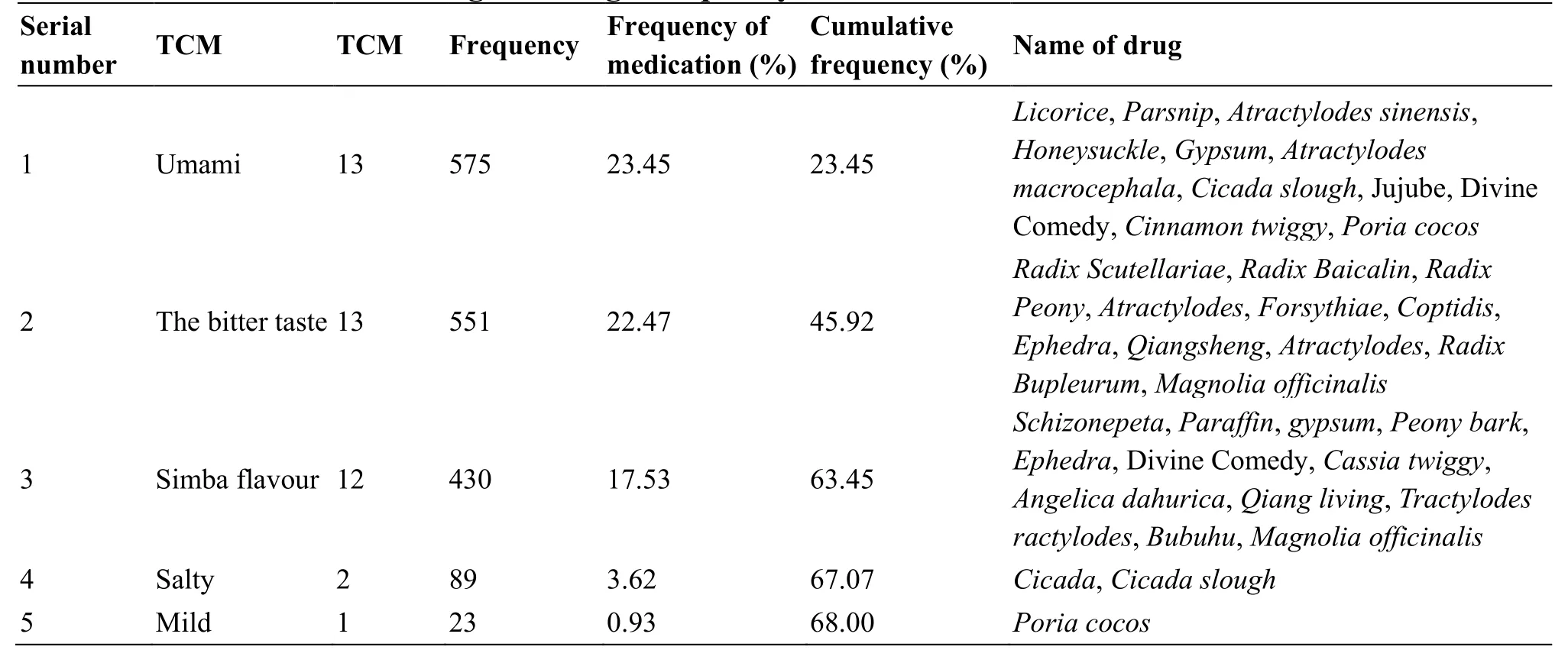
Table 4 Taste of drugs with high-frequency use for the treatment of chronic urticaria
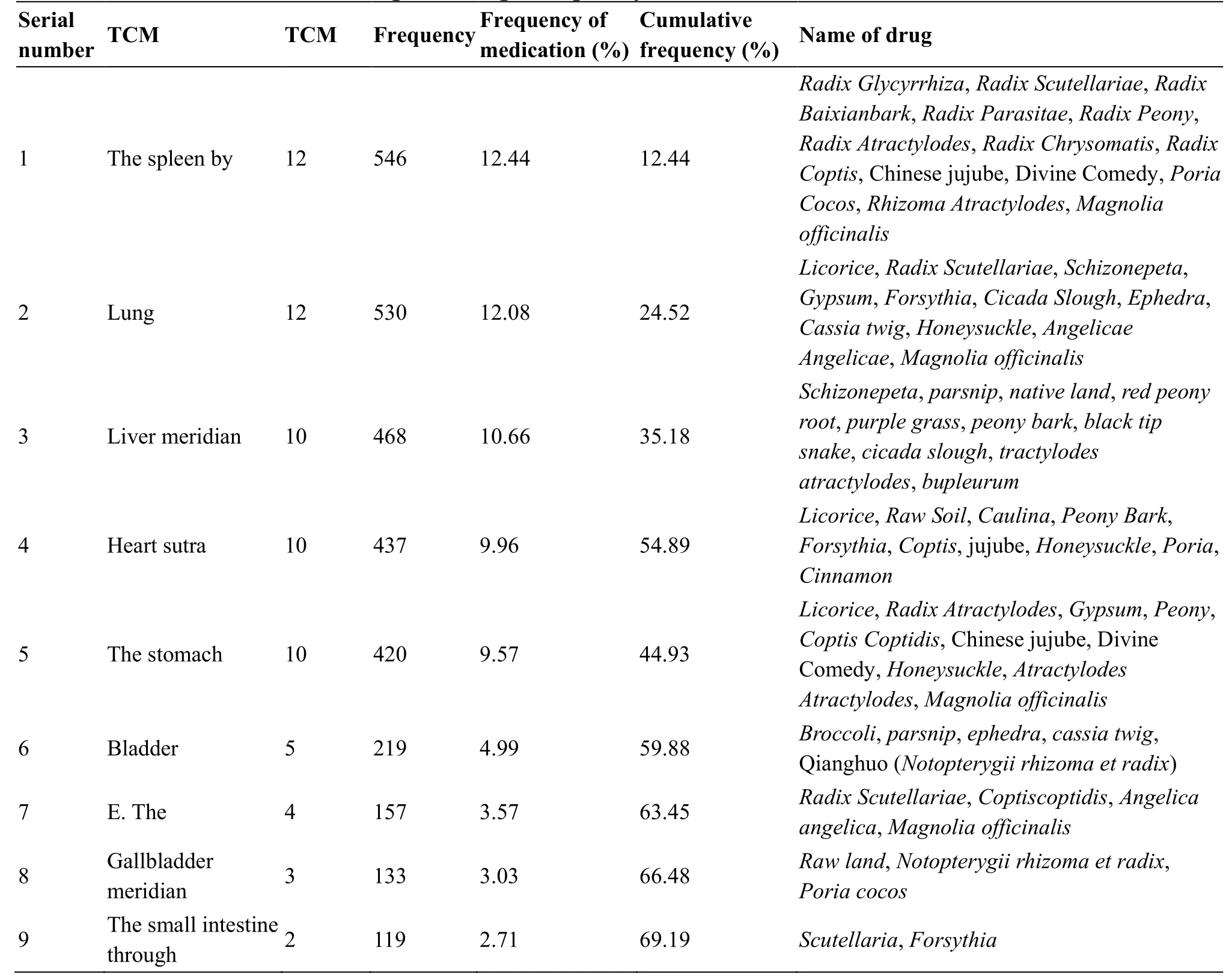
Table 5 Meridian of drugs with high-frequency use for the treatment of Chronic urticaria
New prescriptions based on hierarchical clustering
Based on the unsupervised entropy hierarchical clustering algorithm, the entropy hierarchical clustering analysis shows that four new combinations of treatment prescriptions for chronic urticaria were produced.The results are shown in Table 7.
Discuss
Chronic urticaria is a common dermatosis in clinical practice.Western medicine treatment has a short-term effect on patients’ itching and skin edema.Therefore,antihistamines are often used to inhibit the release of inflammatory mediators such as prostaglandin,histamine and interleukin.However, due to the complexity of the disease and individual differences of patients, there are many problems such as insensitivity to drugs, dependence, drug resistance and easy recurrence.When antihistamines have poor efficacy,immunosuppressants and glucocorticoids are often used, but their clinical application scope is limited due to their high price and obvious side effects [6].TCM believes that the etiology and pathogenesis of chronic urticaria is mainly caused by the wind evil invasion of skin; or diet is not festive, brewed heat and humidity;or the body “Qi” deficiency and blood weak, long illness consumption of “Qi and Blood”, wind evil to take advantage of the gap, or hurt by feelings, born weathering and dryness.So the key in the treatment of chronic urticaria is wind evil.In recent years, many studies have shown that Chinese traditional medicine adjust patients with immune system, improve the blood coagulation function, regulate the release of inflammatory mediators, improve immunity.TCM treatment of chronic urticaria has small side effects,low cost, and it was accepted by the majority of patients in clinic [7].However, it is difficult to be popularized in clinical practice due to the different characteristics of different clinical doctors in syndrome differentiation and the different prescriptions in the published clinical reports.Therefore, in order to better understand the drug compatibility and clinical application of TCM syndrome differentiation in the treatment of chronic urticaria, data mining technology,which is a hot research topic in recent years.It can be used to analyze a large number of heterogeneous medical big data and explore valuable knowledge information.Therefore, by collecting a large number of clinical cases and outpatient prescriptions for chronic urticaria, this study aims to explore the compatibility rule of TCM prescriptions in the treatment of chronic urticaria, so as to provide a reference plan for further clinical treatment of chronic urticaria.
Distribution analysis of high-frequency drug use
It can be seen from Table 1 that the top 3 drugs frequently used by Professor Wang in clinical practice areGlycyrrhizae radix et rhizoma,Radix Scutellariae,and Radix Baicalin, which are used 82 times, 61 times,and 57 times, respectively.Among them,Glycyrrhizae radix et rhizomataste Gan Ping, into the heart and lung meridian, spleen and stomach meridian, with beneficial qi and spleen, blending medicine, detoxification and heat clearing, cough expectorant, slow acute pain effect.Modern pharmacology study shows that theGlycyrrhizae radix et rhizomaextract can cut the tumor necrosis factor levels, inhibit the release of interleukin, which has a good bactericidal anti-inflammatory effect.Glycyrrhizae radix et rhizomaextract still can enhance immunity [8].Among them,Glycyrrhizae radix et rhizomaextract compound--glycyrrhizin has good immunomodulatory and anti-allergic effects, and is widely used in the treatment of a variety of skin diseases [9].Studies have shown that the efficacy of compound glycyrrhizin combined with citrate loratadine in the treatment of chronic urticaria is significantly higher than that of citrate loratadine alone, and the itching degree of patients is significantly reduced and the quality of life is significantly improved [10].As a heat-clearing drug,Radix Baicalin has the effect of clearing heat away,reducing dampness and relieving itching.Pharmacological studies have proved that it has anti-allergy, antibacterial, anti-inflammatory and anti-oxidation effects [11].Wang Shanshan et al.adopted Shenque point (RN8) cupping combined withCompound Radix baicalin decoctionin the treatment of chronic urticaria and achieved a good clinical effect[12].As an antipyretic, modern pharmacological studies have shown thatScutellaria baicalensishas strong anti-allergic, anti-inflammatory and anti-pruritus effects.In dermatology,Scutellaria baicalensishas good efficacy in the treatment of skin diseases with rough skin, thick infiltration and strong mossy pruritus [13].From the use of high-frequency drugs, it can be seen that the drugs of clearing heat and detoxification, dryness and dampness and relieving itching, and invigorating spleen and invigorating qi are of great significance in the clinical treatment of chronic urticaria.
Analysis of high-frequency drug efficacy distribution
It can be seen from Table 2 that the top 3 drugs frequently used by Professor Wang in clinical practice are heat-clearing drugs, antiseptic drugs, and defect-tonifying drugs, with the frequency of 520 times, 291 times and 164 times respectively.The analysis showed that tonifying drugs were mainly tonifying qi and blood, antipyretic drugs were mainly tonifying muscle and dispelling wind and reconciling yingwei, and heat-clearing drugs were mainly clearing heat, dampness and itching.Modern doctors treat chronic urticaria byrelieving the table and dispelling the wind, cooling the blood and relieving itching, clearing heat and detoxification.The results of this data mining are in line with the law of its medicinal use, and it suggests that the value of eliminating dampness and tonifying deficiency medicine in the treatment of chronic urticaria is worth thinking about.
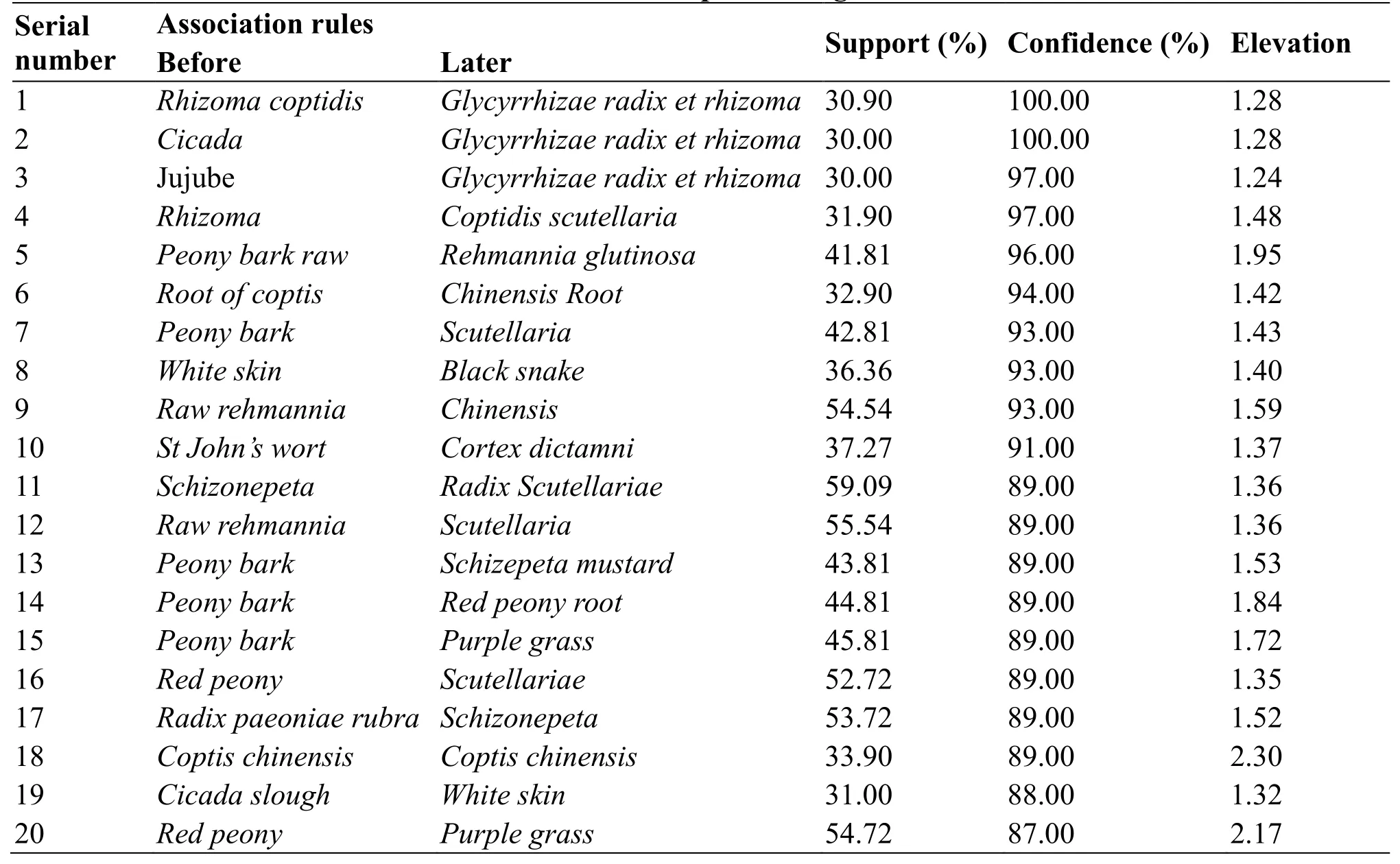
Table 6 Association rules of therapeutic drugs for chronic urticaria
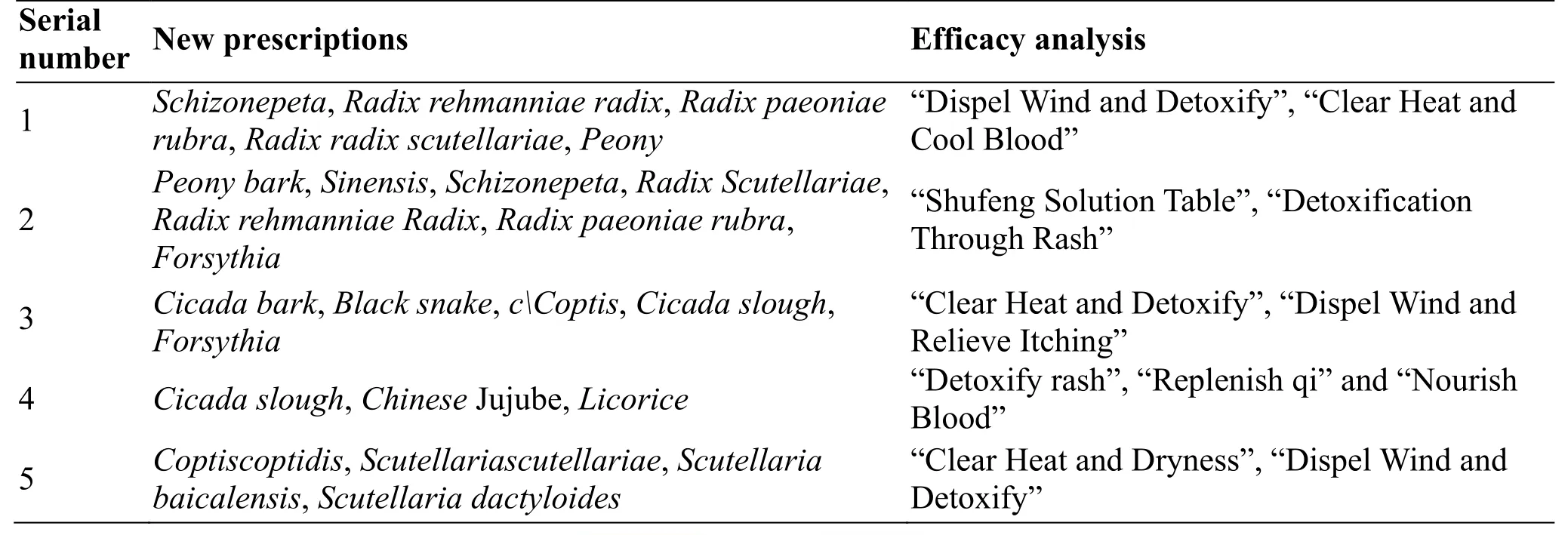
Table 7 New prescriptions for chronic urticaria based on hierarchical clustering
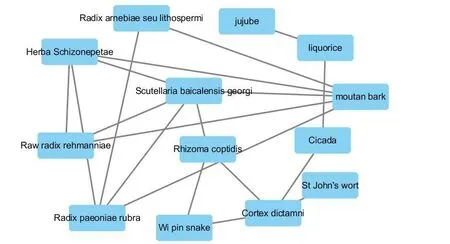
Figure 1 The more drug wiring, the more frequent use
Analysis of high-frequency drug flavor distribution
It can be seen from Table 3 that the top three drug flavors frequently used by Professor Wang Lifen in clinical practice are sweet, bitter and spicy respectively, and the frequency of drug flavors are 575 times, 551 times and 430 times respectively.The taste of the drug is mainly sweet, bitter and pungent.The sex is both cold and warm.Gan can enter the spleen,play a slow and urgent, tonic effect but also adjust the medicine.Bitter can diarrhea, can dry wet, can detoxify heat, dry wet antipruritic.Warming medicine can help dissipate the evil of cold and dampness, and the xin-warming medicine in relieving the symptoms of chronic urticaria is used for the symptoms of wind and cold.Cold medicine can clear heat, cool blood and detoxify.Xinliang medicine can be used to relieve symptoms of chronic urticaria.Sweet, bitter, umani taste in chronic urticaria wind evil incoming table,toxic heat indicates lag, the camp who don’t, not of diet, after feeling the wind evil, disease long qi and blood, wind evil enter the etiology and pathogenesis, it also suggests to join light herbs to enhance the effect with wet, such asPoria cocos, so-called wet wipe out the evil not to rely on, so it provides a certain reference value for clinical treatment of chronic urticaria.
Distribution analysis of high-frequency drug channeling
It can be seen from Table 4 that the top 4 times that Professor Wang Lifen frequently used in clinical practice were the “Spleen Meridian”, “Lung Meridian”, “Liver Meridian” and “Heart Meridian”,with frequencies of 546, 530, 468 and 437 times respectively.The spleen is the acquired foundation, the source of “Qi” and blood, “the spleen manages muscle,the lung manages fur”.And chronic urticaria often occurs in the muscle surface, so in the clinical treatment of chronic urticaria, according to the needs of the appropriate addition of the “Spleen Meridian”drugs such as: white skin, wind, peony bark, etc., to enhance the effect of wind, heat, detoxification and cooling blood, but also can make the drug effect through the muscle surface.Wind evil has the characteristics of discharge and rise, and most of them invade the lungs of the human body.The lungs are at a higher position in the human body, connected with the mouth and nose.When the lungs are invaded by the outside evil spirits, they cannot protect the body, so the evil spirits gather in the skin and muscle, and skin rash can be seen.The medicine that can be added to recuperate lung meridian such as:Black tip snake,Cicada slough,Schizonepetaand so on can be added to strengthen the effect of relieving the table and dispelling the wind through the outbreak.According to the book“Suwen.zhizhenyaodalun”, ( From the Warring States Period, the author is unknown)“All the winds are dizzy, and all belong to theliver; all the pains and itching sores belong to theheart; all anger and depression belong to thelungs; all moisture and swelling belong to thespleen”.Therefore, the treatment of chronic urticaria drugs mainly into the“Liver Meridian”, can help move and adjust “Qi and Blood”, into the lung can help lung ca chang qi activity, into the spleen and stomach can the postnatal solid and gas blood, into the heart sutra, may help blood lines and the functions of heart, so in conclusion,the dispatching of “Qi and Blood” biochemical operation and functions of the main ideas of the treatment of chronic urticaria reagent dosage.The data of medical treatment can more intuitively reflect the treatment and medication rules of chronic urticaria.
Association rule analysis of high-frequency drugs
According to association rule analysis with minimum confidence level 87%, minimum support level 30%and maximum previous item number 1, the drug pair with the highest support level wasSchizonepeta--Radix scutellariae, followed byRadix rehmanniae--Radix scutellariae,Radix rehmanniae--Radix schizonepeta,Radix paeoniae rubra--Radix schizonepeta,Radix paeoniae rubra--Radix scutellariae, etc.The above drugs have the effect ofdetoxification and dispelling wind,clearing heat and cooling blood.
New square combination analysis based on hierarchical clustering
Through data mining of 110 prescriptions collected by Professor Wang Lifen, 5 new prescriptions for chronic urticaria were obtained.According to the analysis of the composition of drugs in the new prescription, the treatment is mainly based on dispelling wind and relieving surface, clearing heat and relieving itching,cooling blood and detoxification.At the same time, it is suggested that the clinical treatment can be improved by adding “Qi Nourishing and Blood Nourishing” drugs and dryness and dampness dissipating drugs.
Conclusion
At present, foreign studies have shown that the impact of this disease on the quality of life of patients is comparable to some fatal diseases, such as heart disease, cerebral hemorrhage, or even more serious[14].According to relevant statistical analysis, the incidence of chronic urticaria patients in China has a trend of increasing [15].From clinical observation,more and more people got chronic urticaria in recent years.Most of the causes are unknown and the inducements are complex.From the data mining results, Professor Wang Lifen is more likely to treat chronic urticaria with the drugs of cool blood hemostasis, dispelling wind and relieving itching,Jianpixiaoshi.By observation of clinical efficacy and patients’ feedback, these kinds of drugs can greatly reduce the patients’ symptoms.Through many years clinical practice Professor Li-Fen Wang concluded the occurrence of chronic urticaria related with exogenous pathogenic wind, non-solid muscle surface, toxic heat blood deficiency.It also related with irregular life work and rest of the most modern people, fast pace of life,big work pressure, polluted living environment, no diet, unclean food stagnant, the stagnation of the origin, modern depression.Therefore, in the clinical treatment of chronic urticaria, Professor Wang Lifen not only uses drugs that disperse evil spirit in the human body, cool the temperature and detoxify the skin, slow down the blood operation, eliminate the toxic evil in the human body and stop the irritation in the skin, but also adds some drugs that promote gastrointestinal function peristalsis and relieve the anxiety in the human body, such asDivinecocos,
Poriacocos and chapleurum.Through clinical observation, these drugs had certain therapeutic effects.In this paper, data mining clinical treatment of chronic urticaria medication law is only professor Wang Lifen outpatient prescriptions.A large number of clinical cases from multiple doctors still need to be collected for further verification.It is hoped that in the future, through data mining of the prescriptions of various clinical doctors in the treatment of chronic urticaria and summarizing their clinical medication rules, each doctor can take advantage of the strengths of various doctors.It will provide reference value for the further treatment of chronic urticaria in the future.
- Medical Data Mining的其它文章
- The research progress of acupuncture and moxibustion in the treatment of peripheral facial paralysis
- A study on the rule of Chinese medicine use against influenza virus based on data mining
- Somatic TP53 mutations and comparison of different TP53 functional domains in human cancers: data analysis from the IARC TP53 database and the National Cancer Institute GDC data portal
- Unsatisfied methodological qualities assessment of systematic reviews/Meta-analyses on Chinese medicine for stroke and their risk factors

